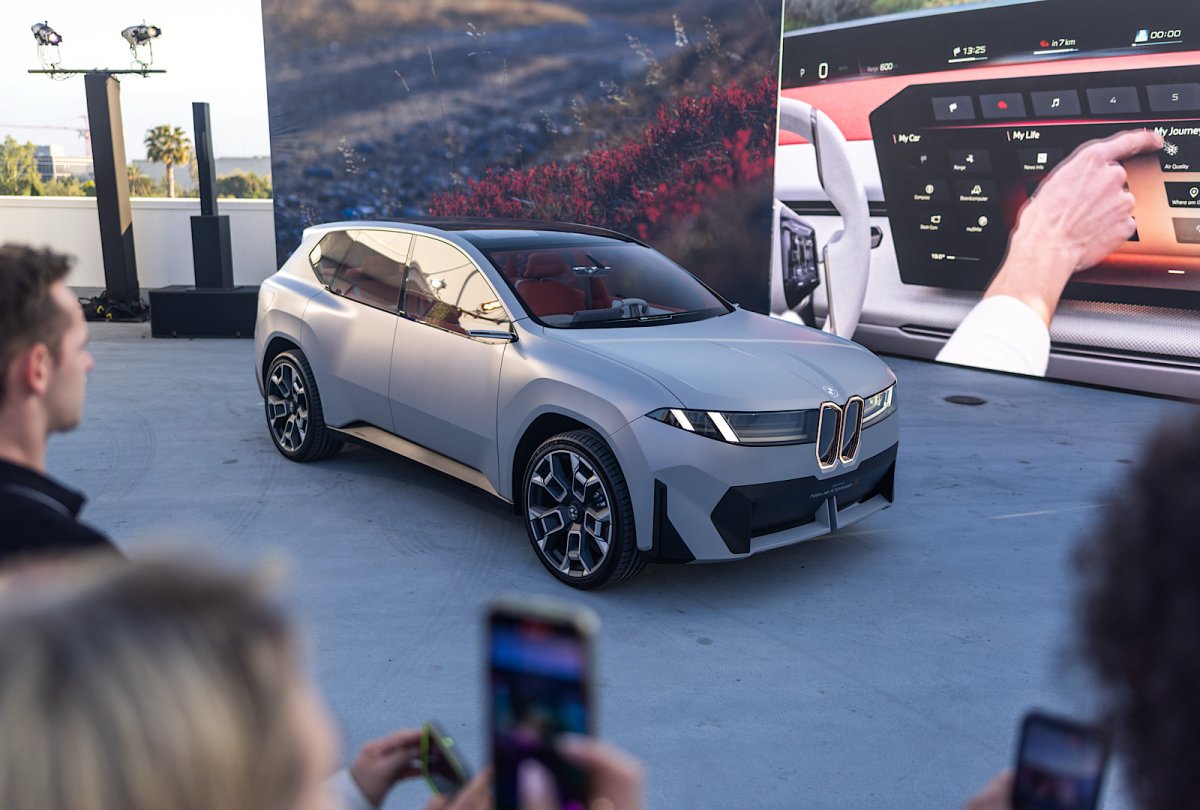BMW is on the verge of launching its Neue Klasse next-generation vehicles, which will feature a completely reimagined user experience (UX) and user interface. The company previewed its new UX, showcasing the boundary-pushing technology of Panoramic iDrive, a projected image display on the black of a vehicle's front window glass, and a rhombus-shaped infotainment screen, at CES, a consumer electronics trade show.
As part of the multiyear development of Neue Klasse, Frank Weber, member of the Board of Management of BMW responsible for vehicle development, told Newsweek that the company had 3,000 people from outside BMW to test its prototypes.
Neue Klasse is the brand's name for a new generation of BMW vehicles that will feature next-generation technology, powertrains and design when they begin coming to market at the end of 2025.
"I cannot tell the hours, but I can tell you that we had probably 3,000 people in the process," he said, explaining that "you always have to do it in at least three regions: China, Europe, U.S. [They] have very different behavior."
"Automakers will survey hundreds of customers in each region for feedback on different elements of a proposed UX design over the course of a few years to inform design choices during development. This could take the form of online/email surveys and/or in-person focus groups," Denise Barfuss, president and managing director of OEM Solutions and principal consultant at AutoMobility Advisors, told Newsweek.

"Asia, Europe and North America comprise nearly the entire volume of new vehicle sales globally. They also represent the most technologically advanced areas of the globe with the longest history of traditional car cultures, meaning most of the populations will have experience buying, owning and operating a vehicle," she said.
As part of its research and development, BMW invited customers into "usability labs" and asked them conceptual questions that varied by the stage of development. As Weber's team came nearer an end product, the questions became more refined.
The process can be arduous with testers on the job for eight hours at a time. They go step by step through all the things on the team's checklist, often executing routine tasks like changing the radio station and climate control options. "What we do is we observe what they do and where the misunderstanding occurs," Weber said.
"The most important for us is that everything happens intuitively, without explanation. The worst thing that can happen to you is that you have to explain how you do this. So we always ask them, almost unprompted, do this and that and see then how they are approaching this," he said, calling the process "intensive."
The team takes the data gleaned from time in the lab with testers, correlates it and makes corrections to their in-development software and hardware where necessary. The process repeats itself as fine-tuning occurs.
It takes years to get it right. "This is then happening over at least a two-and-a-half, three-year period from the early concept," Weber said.
"Automakers routinely use consumer clinics for testing, though the scope of this program may be larger than many," Stephanie Brinley, associate director of research and analysis at S&P Global, told Newsweek.
"Some original equipment manufacturers also use a combination of clinics with direct observation. The depth and scope of this consumer research reflects concern about getting it right, but what is most important is how they apply their learnings, and how they handle the regional differences and nuances that they find. Consumer expectations from one region to another can vary widely," she said.

During its development process, BMW discovered that Chinese customer preferences for the interface varied from Western preferences. So, Neue Klasse vehicles will feature a different digital surface for China than in Western vehicles. System fundamentals, like how it operates on the back end, are unchanged.
"Getting Neue Klasse right is important, but I think it's also important to remember that consumer UX is as iterative a process as anything else in automotive development. BMW in particular has lived quite well through criticism of its various iDrive systems and continued to improve. There is low margin for bad errors, but there is ability to improve as well," Brinley said.
The last round of study was completed in late 2024 and BMW is moving forward toward production at the end of 2025, Weber said.














)





 English (US) ·
English (US) ·